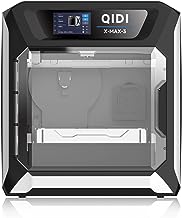Interested in some thoughts from people who have experience with ABS, PVC - and even PS, PMMA - as Hybrid Fuels.
I've attached a paper that I've read many times, and continue to go back to - again and again. In my view, as a very experienced Physics, Chemistry, and Materials Lab Guy, this is particularly well done!!!
I don't want to criticize - at all!!! - anyone's fuel choice(s), what preloads are available, what preloads people are buying, using, have been using and - perhaps very importantly!! - are both experienced and comfortable with!!!
It seems to me that, from this paper, both Polyethylene and Polypropylene are really superior choices to ABS, PS, and PMMA. I'll start with the data for ABS, as it's clear to me that some of you - at least one of you!!! - is LIGHT YEARS AHEAD of me in terms of 'real' work, progress, experience, testing, development, engineering, knowledge, data taken, and - and - TEST FLIGHTS!!!
Material (abbreviated name), Qc (kJ/g) Δhc(kJ/g) Δhc/ro (kJ/g-O2)
Poly(acrylonitrilebutadiene-styrene) 39.84 38.07 13.04
Polystyrene (PS) 43.65 41.96 13.64
Poly(methylmethacralate) (PMMA) 26.75 24.99 13.02
While the first two quantities, and their units, may be familiar, the last quantity may be new. Here's what the author has to say: "The quantity, E = Δhc/ro is the heat released by combustion per unit mass of oxygen consumed in a fire where all combustion products are in their gaseous state. An accurate and representative value of E is thus important for calculating the heat released during flaming combustion of polymers
from oxygen consumption measurements."
And, now, Polyethylene and Polypropylene:
Polyethylene (PE) 47.74 44.60 13.01
Polypropylene (PP) 45.80 42.66 12.44
I know - but I don't really understand why!!! - that another factor here is Rho; the actual Fuel Density. One reason that I've been so interested in POM (Polyoxymethylene) is that it's Rho is 1.41 gm/cc.
My point here is NOT to say, "Hey, why are people using ABS, PS, and PMMA when both PE and PP seem 'better'!!!" But, if this data is any guide, it seems to me that both PE and PP are really good hybrid solid fuel choices, with PS as a clear # 3. Having said that - and admitting to being - again - way, WAY behind so many of you!!!! - I would really like to hear some thoughts, reactions, reasoning, comments, etc!!!
Thanks Everyone!!!
I've attached a paper that I've read many times, and continue to go back to - again and again. In my view, as a very experienced Physics, Chemistry, and Materials Lab Guy, this is particularly well done!!!
I don't want to criticize - at all!!! - anyone's fuel choice(s), what preloads are available, what preloads people are buying, using, have been using and - perhaps very importantly!! - are both experienced and comfortable with!!!
It seems to me that, from this paper, both Polyethylene and Polypropylene are really superior choices to ABS, PS, and PMMA. I'll start with the data for ABS, as it's clear to me that some of you - at least one of you!!! - is LIGHT YEARS AHEAD of me in terms of 'real' work, progress, experience, testing, development, engineering, knowledge, data taken, and - and - TEST FLIGHTS!!!
Material (abbreviated name), Qc (kJ/g) Δhc(kJ/g) Δhc/ro (kJ/g-O2)
Poly(acrylonitrilebutadiene-styrene) 39.84 38.07 13.04
Polystyrene (PS) 43.65 41.96 13.64
Poly(methylmethacralate) (PMMA) 26.75 24.99 13.02
While the first two quantities, and their units, may be familiar, the last quantity may be new. Here's what the author has to say: "The quantity, E = Δhc/ro is the heat released by combustion per unit mass of oxygen consumed in a fire where all combustion products are in their gaseous state. An accurate and representative value of E is thus important for calculating the heat released during flaming combustion of polymers
from oxygen consumption measurements."
And, now, Polyethylene and Polypropylene:
Polyethylene (PE) 47.74 44.60 13.01
Polypropylene (PP) 45.80 42.66 12.44
I know - but I don't really understand why!!! - that another factor here is Rho; the actual Fuel Density. One reason that I've been so interested in POM (Polyoxymethylene) is that it's Rho is 1.41 gm/cc.
My point here is NOT to say, "Hey, why are people using ABS, PS, and PMMA when both PE and PP seem 'better'!!!" But, if this data is any guide, it seems to me that both PE and PP are really good hybrid solid fuel choices, with PS as a clear # 3. Having said that - and admitting to being - again - way, WAY behind so many of you!!!! - I would really like to hear some thoughts, reactions, reasoning, comments, etc!!!
Thanks Everyone!!!


















